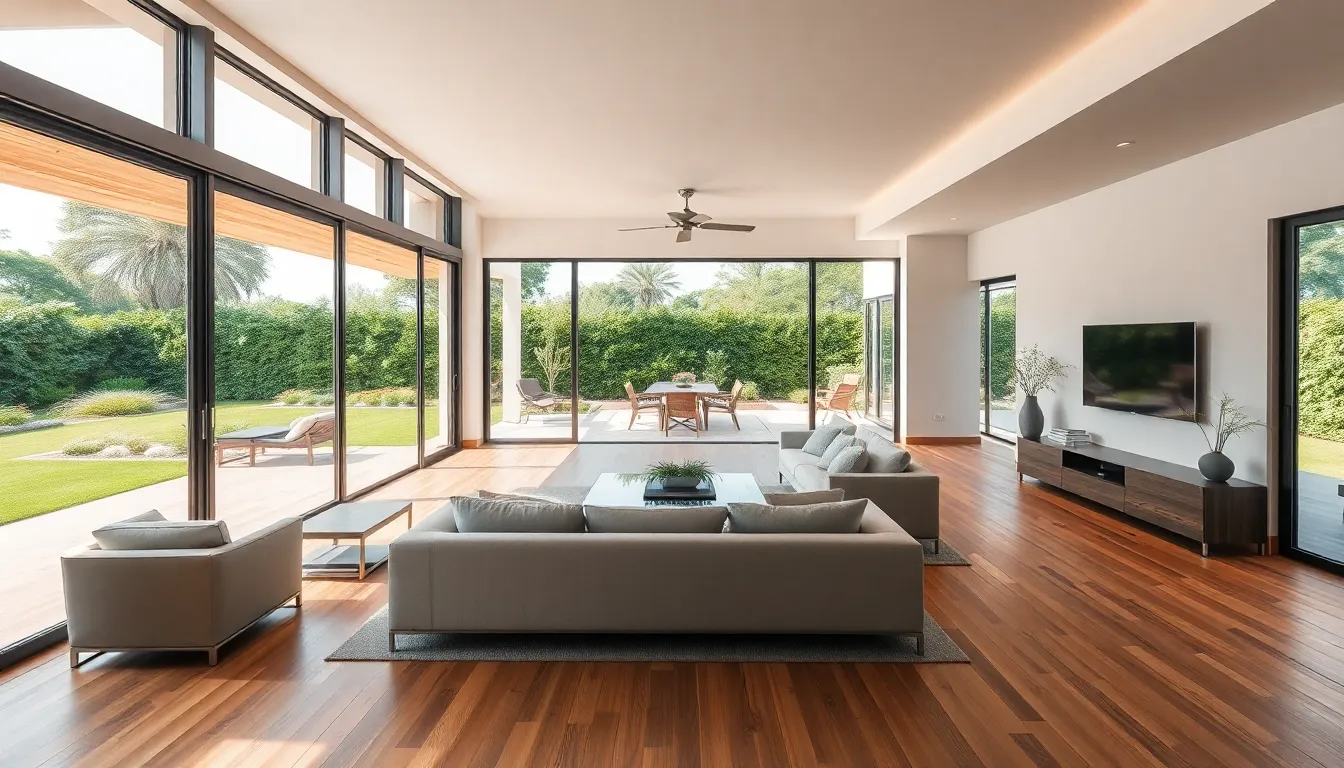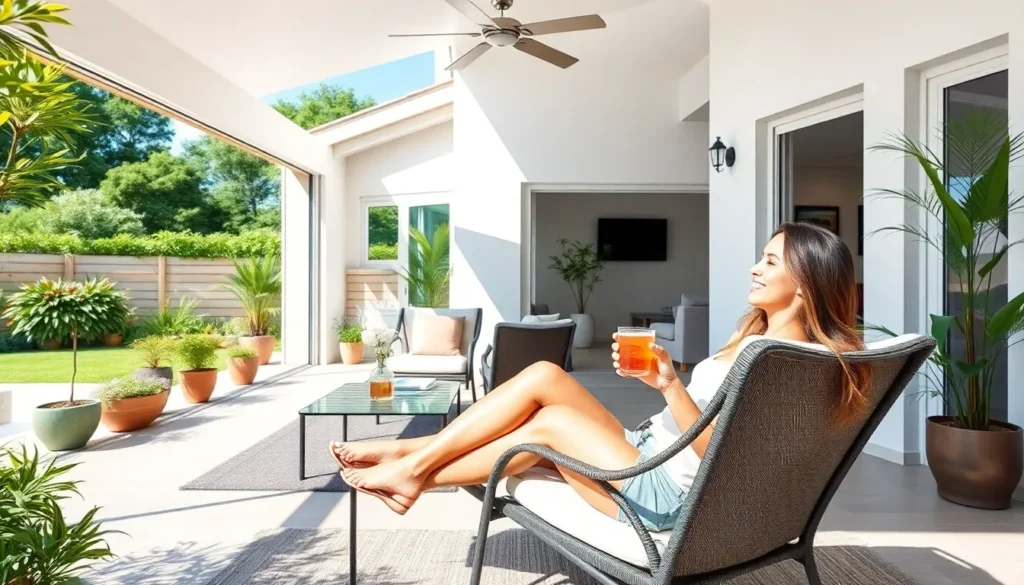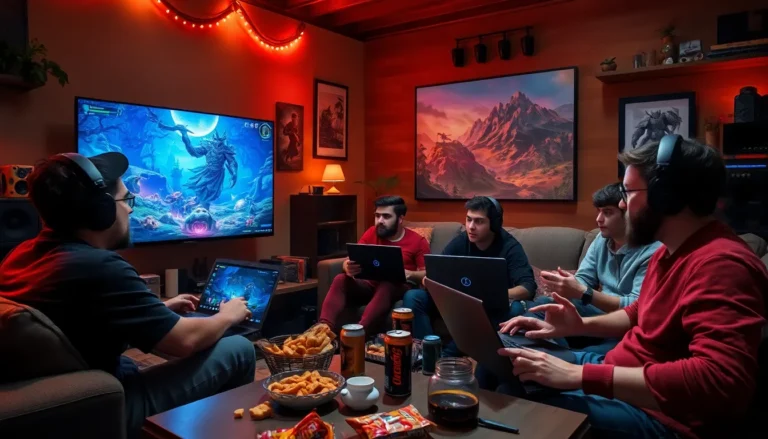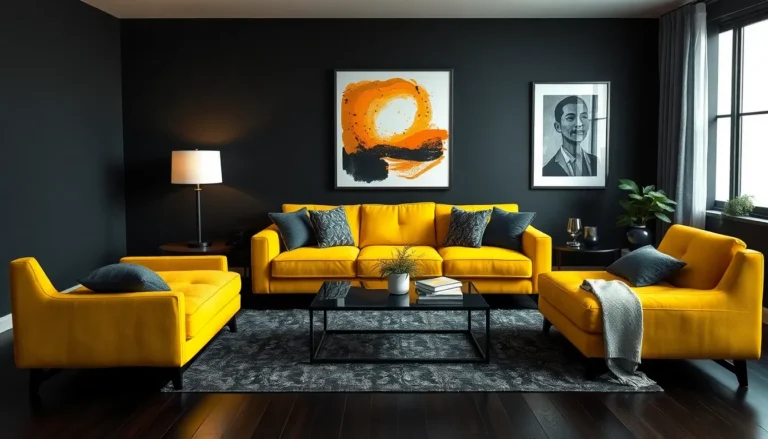Table of Contents
ToggleThe concept of indoor-outdoor living is transforming how people experience their homes. This seamless blend of interior and exterior spaces invites nature into daily life, creating a harmonious atmosphere that enhances well-being. With the right design elements, homeowners can enjoy the beauty of the outdoors while still relishing the comforts of indoor living.
From expansive sliding doors to cozy patios, the possibilities for integrating these spaces are endless. This lifestyle not only maximizes square footage but also fosters a sense of connection with the environment. As more individuals seek refuge from the hustle and bustle of urban life, embracing indoor-outdoor living has become a popular trend, promising both aesthetic appeal and practical benefits.
Understanding Indoor-Outdoor Living
Indoor-outdoor living represents a design philosophy that integrates indoor spaces with outdoor environments, enhancing both aesthetics and functionality. This approach creates a continuous flow between the two, fostering a deeper connection with nature.
Definition and Concept
Indoor-outdoor living refers to architectural and design practices that merge the indoors with the outdoors. This concept typically involves expansive windows, sliding glass doors, and open floor plans, which invite natural light and outdoor views into interior spaces. By eliminating barriers, homeowners enjoy the benefits of fresh air and outdoor scenery while maintaining the comforts of home.
Benefits of Indoor-Outdoor Living
Indoor-outdoor living offers numerous advantages:
- Enhanced Aesthetic Appeal: Seamless transitions between spaces create visually pleasing environments that draw attention to natural landscapes.
- Increased Natural Light: Openings such as large windows and doors promote natural illumination, reducing reliance on artificial lighting.
- Improved Ventilation: Cross-ventilation opportunities enhance indoor air quality, providing a fresh atmosphere.
- Expanded Living Space: Patios and decks serve as additional usable areas, ideal for entertaining or relaxation.
- Enhanced Well-being: Increased exposure to nature reduces stress and promotes mental health.
- Higher Property Value: Properties featuring indoor-outdoor living elements often command higher market prices due to their appeal.
Incorporating these features enhances a home’s livability while promoting a lifestyle connected to nature.
Design Principles for Indoor-Outdoor Living

Indoor-outdoor living blends spaces, maximizing functionality and aesthetics. Key design principles focus on seamless transitions and natural light utilization.
Creating Seamless Transitions
Creating seamless transitions between indoor and outdoor spaces enhances flow and connectivity. Design elements such as wide sliding glass doors or expansive windows foster this transition.
- Flooring: Use consistent flooring materials like wood or stone across both spaces for visual continuity.
- Furniture: Select outdoor furniture that complements indoor styles, ensuring a cohesive look.
- Landscaping: Incorporate landscaping features that draw the eye from inside to outside, using plants or pathways to connect the areas.
Utilizing Natural Light
Utilizing natural light accentuates the relationship between indoor and outdoor living areas. Enhanced brightness creates an inviting atmosphere and promotes well-being.
- Window Placement: Position large windows strategically to maximize views and daylight penetration.
- Skylights: Install skylights to introduce more light, particularly in darker indoor areas.
- Light Colors: Choose light-colored finishes and furnishings that reflect natural light, amplifying brightness within the space.
Key Elements of Indoor-Outdoor Spaces
Indoor-outdoor spaces thrive on the integration of thoughtful design elements that maximize comfort and aesthetic appeal. Key components include furniture, decor, and landscaping that work in harmony to blur the line between indoor and outdoor living.
Furniture and Decor
Furniture selection and decor influence the overall ambiance and functionality of indoor-outdoor spaces.
- Durable materials: Choose weather-resistant materials, such as teak or aluminum, for outdoor furniture to withstand varying climates.
- Coordinated styles: Opt for a cohesive style that reflects the indoor environment, ensuring continuity in design, color, and texture.
- Flexible arrangements: Employ modular or adaptable furniture that allows for easy reconfiguration, accommodating different activities and guest sizes.
- Comfortable textiles: Incorporate outdoor-friendly cushions and fabrics that provide comfort while resisting moisture and fading.
- Decorative elements: Use accessories like rugs, throws, and artwork to enhance the aesthetic, creating a more inviting atmosphere.
Landscaping and Greenery
Landscaping significantly enhances the connection between indoor and outdoor spaces, creating a tranquil environment.
- Native plants: Select plants suited for the local climate to reduce maintenance and enhance biodiversity.
- Layered plantings: Utilize a mix of heights and textures to add depth and interest to garden spaces, attracting wildlife and creating a lush backdrop.
- Integrated pathways: Design walkways that connect indoor spaces to outdoor areas, using materials that mirror interior flooring for a seamless transition.
- Outdoor living areas: Create designated outdoor spaces, such as patios or decks, equipped with amenities for entertaining and relaxation.
- Seasonal interest: Include plants that provide year-round visual appeal, with flowers, foliage, and structural features that evolve with the seasons.
Indoor-Outdoor Living in Different Climates
Indoor-outdoor living adapts to various climates, ensuring comfort and enjoyment year-round. Each climate presents unique opportunities and challenges for blending indoor and outdoor spaces.
Adapting to Warm Climates
Warm climates encourage extensive indoor-outdoor integration. Expansive patios equipped with shaded areas, such as awnings or pergolas, provide refuge from direct sunlight. Outdoor kitchens and dining areas promote alfresco experiences, increasing usability. Utilizing materials like native stone and ceramic tile helps maintain cooler surfaces. Incorporating ceiling fans and outdoor misting systems enhances comfort during hot months. Soft, breathable fabrics for outdoor furniture withstand humidity, ensuring durability and aesthetics. Additionally, incorporating lush landscaping with trees and plants offers natural cooling and enhances the overall ambiance.
Adapting to Cold Climates
Cold climates present different challenges for indoor-outdoor living. Glass-enclosed porches or sunrooms allow enjoyment of the outdoor view while providing warmth. Strategic placement of outdoor fireplaces or fire pits creates inviting gathering spots during cooler evenings. Insulated materials for patio furniture add comfort and resilience against weather elements. Layered outdoor rugs and throw blankets provide warmth, increasing usability. Maximizing sunlight through large windows helps capture solar heat and light during the day. Selecting native, cold-hardy plants for landscaping ensures sustainability and reduces maintenance.
Embracing indoor-outdoor living transforms homes into serene retreats that foster a deeper connection with nature. This design philosophy not only enhances aesthetic appeal but also promotes well-being and functionality. By integrating elements like expansive windows and cohesive furniture styles, homeowners can create inviting spaces that blur the lines between indoors and outdoors.
The adaptability of this approach across various climates ensures that everyone can enjoy its benefits year-round. As homeowners continue to seek ways to enhance their living environments, the trend of indoor-outdoor living stands out as a compelling solution for modern lifestyles. It’s a seamless way to enjoy the beauty of nature while relishing the comforts of home.







